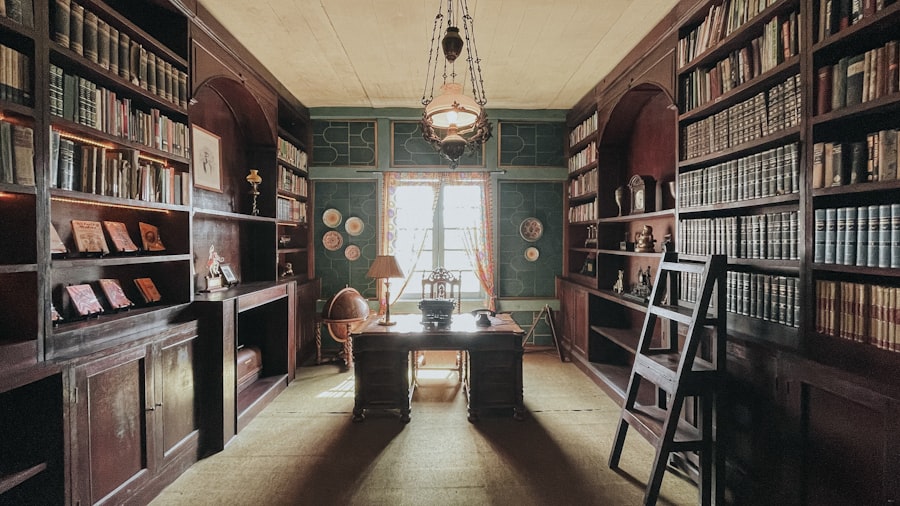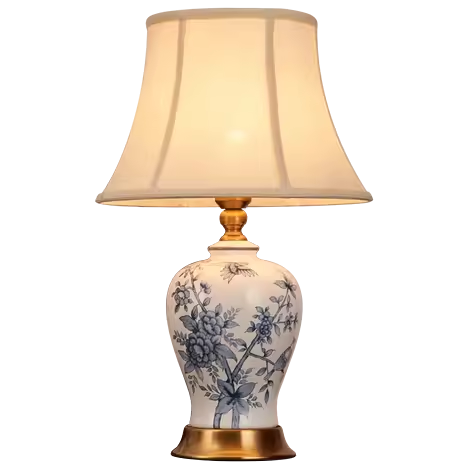The classic desk lamp has been a staple in homes and offices for decades. Despite technological advancements and the introduction of new lighting options, the classic desk lamp remains popular. This blog post will explore the history, anatomy, benefits, styles, and maintenance of desk lamps.
A Brief History of Desk Lamps: From Oil Lamps to LED Lights
Rizishop Desk lamps have come a long way since their inception. The first desk lamp was invented in the 1800s and was powered by oil. These lamps were often made of metal and had a glass shade to protect the flame. As electricity became more widespread in the early 1900s, desk lamps evolved to use electric bulbs instead of oil. This revolutionized the way people worked and provided a more reliable and convenient source of light.
In recent years, LED lights have become increasingly popular for desk lamps. LED lights are energy-efficient, long-lasting, and provide a bright and focused light. They also come in a variety of colors, allowing users to customize their lighting experience. Despite these advancements, many people still prefer the classic design and warm glow of traditional desk lamps.
The Anatomy of a Classic Desk Lamp: Components and Features
A classic desk lamp typically consists of three main components: the base, arm, and shade. The base provides stability and support for the lamp, while the arm allows for adjustable positioning. The shade is responsible for directing and diffusing the light.
Many desk lamps also come with additional features to enhance functionality. Adjustable arms allow users to position the light exactly where they need it, reducing eye strain and improving productivity. Dimmer switches are another common feature that allows users to adjust the brightness of the light to their preference.
When it comes to bulbs, desk lamps can accommodate various types, including LED and incandescent bulbs. LED bulbs are energy-efficient and long-lasting, making them a popular choice. Incandescent bulbs, on the other hand, provide a warm and cozy glow but are less energy-efficient and have a shorter lifespan.
The Benefits of Using a Desk Lamp: Improved Productivity and Eye Health
| Benefits | Metrics |
|---|---|
| Improved Productivity | Increased focus and concentration |
| Reduced eye strain and fatigue | |
| Enhanced reading speed and accuracy | |
| Eye Health | Reduced risk of eye diseases |
| Improved color perception | |
| Prevention of headaches and migraines |
One of the main benefits of using a desk lamp is the focused lighting it provides. Unlike overhead lighting, which can cast shadows and cause eye strain, desk lamps direct light exactly where it is needed. This reduces eye fatigue and allows for better concentration and productivity.
Proper lighting is also essential for maintaining good eye health. Working in dim or poorly lit environments can cause eye strain, headaches, and even long-term damage to the eyes. A desk lamp with adjustable brightness can help create an optimal lighting environment and reduce the risk of eye-related issues.
Additionally, desk lamps can enhance the ambiance of a room. The warm glow of a classic desk lamp can create a cozy and inviting atmosphere, making it an excellent addition to any workspace or living area.
Choosing the Right Desk Lamp: Factors to Consider
When choosing a desk lamp, there are several factors to consider. First, consider the purpose of the lamp. Will it be used for reading, writing, or general task lighting? This will help determine the type of light output and adjustability needed.
The size of the desk is another important consideration. A larger desk may require a taller or longer arm to provide adequate lighting coverage. Conversely, a smaller desk may benefit from a more compact lamp that doesn’t take up too much space.
The brightness and color temperature of the bulb should also be taken into account. Brightness is measured in lumens, with higher lumens indicating a brighter light output. Color temperature refers to the warmth or coolness of the light, with lower temperatures being warmer and higher temperatures being cooler.
Energy efficiency and cost are also important considerations. LED bulbs are generally more energy-efficient and have a longer lifespan than incandescent bulbs. While LED lamps may have a higher upfront cost, they can save money in the long run through reduced energy consumption and bulb replacement.
Styles and Designs of Classic Desk Lamps: From Art Deco to Modern Minimalism

Desk lamps come in a variety of styles and designs to suit different tastes and preferences. Classic styles such as Art Deco, Mid-Century Modern, and Industrial are popular choices for those looking for a vintage or retro look. These lamps often feature sleek lines, metallic finishes, and unique shapes.
For those who prefer a more contemporary look, minimalist designs are gaining popularity. These lamps often have clean lines, neutral colors, and simple shapes. They blend seamlessly into modern interiors and provide a sleek and unobtrusive lighting solution.
Materials Used in Desk Lamp Construction: Metal, Glass, and More
Desk lamps can be made from a variety of materials, including metal, glass, plastic, and even wood. Metal is a popular choice due to its durability and versatility. Brass, in particular, is often used for its elegant and timeless appearance. Glass shades are also common and can add a touch of sophistication to a desk lamp.
The material used can also affect the weight of the lamp. Metal lamps tend to be heavier and more stable, while plastic lamps are lightweight and easy to move around. Consider the overall aesthetic you want to achieve and choose a material that complements your existing decor.
Maintaining and Caring for Your Desk Lamp: Tips and Tricks
To keep your desk lamp looking its best, regular cleaning and dusting are essential. Use a soft cloth or duster to remove any dust or debris from the lamp’s surface. Avoid using harsh chemicals or abrasive materials that could damage the finish or shade.
If your lamp has a glass shade, you can use glass cleaner to remove any smudges or fingerprints. Be sure to follow the manufacturer’s instructions and avoid spraying the cleaner directly onto the lamp. Instead, spray it onto a cloth and gently wipe the shade.
Proper storage and handling can also prolong the life of your desk lamp. When not in use, turn off the lamp and unplug it from the power source. Avoid placing heavy objects on top of the lamp or using excessive force when adjusting the arm or shade.
Desk Lamps in Interior Design: How to Incorporate Them into Your Space
Desk lamps can be used as a focal point or as a complementary piece in a room. If you have a statement desk lamp with a unique design or color, you can make it the centerpiece of your workspace or living area. Pair it with neutral furniture and accessories to let the lamp shine.
For a more cohesive look, match the style and design of the lamp to the decor of the room. If you have a modern and minimalist interior, choose a desk lamp with clean lines and a sleek finish. If your space has a vintage or retro vibe, opt for a classic desk lamp with an antique brass finish.
Desk lamps can also be used to highlight artwork or other decorative elements in a room. Position the lamp near a painting or sculpture to draw attention to it and create a focal point. This can add depth and visual interest to your space.
The Timeless Elegance of the Classic Desk Lamp
Despite technological advancements and the introduction of new lighting options, the classic desk lamp remains a popular and timeless choice. Desk lamps provide focused lighting, improve productivity and eye health, and enhance the ambiance of a room.
With a variety of styles, designs, and materials to choose from, there is a desk lamp for every taste and need. Whether you prefer a vintage-inspired lamp with an antique brass finish or a sleek and modern design, there is no shortage of options available.
Investing in a high-quality desk lamp can not only improve your workspace but also add a touch of elegance to your home or office. So why not embrace the enduring appeal of the classic desk lamp and enjoy the benefits it brings?
